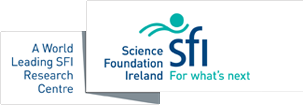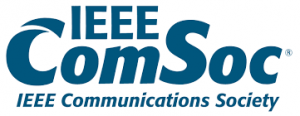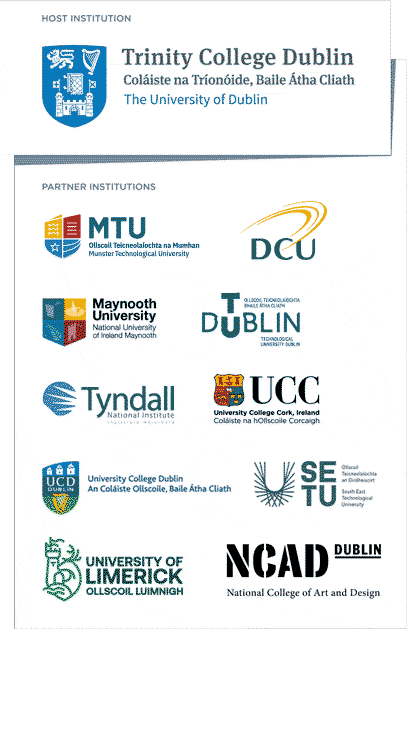Here are some high-impact publications from CONNECT’s researchers…
Title: Resource Sharing in Technologically-defined Social Networks
Authors: Hirokazu Shirado, George Iosifidis, Leandros Tassiulas & Nicholas A. Christakis
Journal: Nature Communications, 10, 1079 (2019)
What’s this paper about?
The sharing and exchange of resources in different kinds of networks such as communications networks and smart grids.
Resource sharing is a fundamental building block of decentralized systems; yet, we know little about how humans make sharing decisions in practice, and how information availability or the network structure affect their strategy. We investigated these questions in a series of first-ever behavioural network experiments involving more than 2,000 users.
What have you discovered?
Users were more collaborative than traditional microeconomic theory presumes, trying consistently to establish reciprocal relationships rather than exploiting their neighbours. Denser network graphs decrease any wealth inequality, but this effect saturates. Also, we discovered that the network structure affects, in a predictable fashion, the resource benefits that each node receives, but also shapes the overall resource distribution efficiency.
So what?
This first-ever experimental study of network resource sharing has implications that extend well-beyond engineering to sociology, economics, and psychology. Our experiments show how to make network resource sharing more equal; alleviate the impact of behavioural biases when humans are involved; and shape the network structure or information availability (e.g., about the nodes’ resource) so as to induce desirable sharing outcomes.
Our study offers a set of guidelines for reducing the costs and increasing the impact of ideas such as sharing-economy mobile apps, network and over-the-top operators designing (hybrid) peer-to-peer solutions (such as Xfinity by Comcast or FON-type of services). For instance, our findings suggest ways to add or delete links that will increase the amount of exchanged resources; when and how to reveal information to users so as to induce more reciprocal strategies; and how centrally-provisioned resources (e.g., public WiFi spots) can have multiplicative effects in terms of performance.
Read the full paper here (pdf). DOI here.
Title: Passive Self-Interference Suppression for Single-Channel Full-Duplex Operation
Authors: Adam Narbudowicz; Giuseppe Ruvio; Max J. Ammann
Journal: IEEE Wireless Communications Magazine, 25, 5, 64-69 (October 2018)
What’s this paper about?
The potential of full-duplex radios to achieve more secure and spectrum-efficient wireless communication.
A full-duplex radio doubles the communication throughput of a wireless device allowing it to transmit and receive signals simultaneously, i.e., at the same time and same frequency. This is a feature currently not implemented in any commercial wireless product. Its benefits are so great that this research area is sometimes called the ‘Holy Grail’ of telecommunications. This research paper presents ground-breaking work on full-duplex radios, which could lead to the doubling of the wireless data without using any additional spectrum.
What have you discovered?
This paper is the first to formulate basic design requirements for the antennas used in these radios. Antenna performance is vitally important for the full-duplex operation. This papers shows that a perfect full-duplex antenna cannot be more than 50% energy efficient. In other words, one can optimize, at most, two out of three key parameters: energy efficiency, transmission-reception with the same channel, or good isolation. Since there is no silver-bullet, it is important to know the intended channel and application in order to tailor the desired full-duplex solution.
So what?
We intend to use this knowledge to completely rethink the way full-duplex antennas are currently designed, with the goal of substantially simplifying their structure and allowing low-cost PCB-based manufacture.
Read the full paper here (pdf). DOI here.
Title: Magnetic performances and switching behaviour of Co-rich CoPtP micro-magnets for applications in magnetic MEMS
Authors: Dhiman Mallick, Kankana Paul, Tuhin Maity, and Saibal Roy
Journal: Journal of Applied Physics, 125, 023902 (2019)
What’s this paper about?
Permanent magnets which do not contain rare-earth metals such as hard-ferromagnetic alloys and compounds.
These are incredibly useful in magnetic-microelectromechnical systems (MEMS) for biomedical-science, ICT and spintronic-based devices — cornerstones of today’s miniaturised tech world. Developing more efficient and cost-effective micromagnets in MEMS-NEMS scale is highly restrained due to the detrimental effects of scaling and the demagnetising field as well as the lack of hard-magnetic material compatible with CMOS integration. Cobalt-rich CoPt alloys are a promising group of materials for these applications due to their magnetic properties.
What have you discovered?
This paper reports a new fabrication process and material characterisation for the Co-rich CoPtP films as a potential candidate for MEMS. The researchers have developed thicker films (thicknesses ranging up to 30 micrometers) and have extensively studied the nature of size-dependent magnetisation reversal indicating a unique interplay of multiple magnetic interactions which provides an opportunity of overall tunability.
So what?
This research provides a roadmap to optimize the shape, interspacing and aspect-ratio of patterned micro-magnets for enhancing the overall performance suitable for a wide range of MEMS applications such as MEMS mechanical energy harvesters powering wireless sensor nodes for the Internet of Things.
Read the full paper here (pdf). DOI here.
Title: Applications of Blockchains in the Internet of Things: A Comprehensive Survey
Authors: Muhammad Salek Ali, Massimo Vecchio, Miguel Rodrigo Pincheira-Caro, Koustabh Dolui, Fabio Antonelli and Mubashir Husain Rehmani
Journal: IEEE Communications Surveys and Tutorials, 21, 2, 1676-1717 (2019)
What’s this paper about?
This is a survey of the usefulness of blockchain for IoT applications.
Blockchain can play a vital role in IoT with features such as decentralization, auditability, and fault tolerance. It has already been applied successfully in several sectors ranging from health to transport, and finance to energy management.
What have you discovered?
We provide an in-depth discussion on the capabilities of blockchain-based IoT systems to achieve auditability, privacy, security, and decentralization. We also describe trustless architectures of IoT, blockchain-based IoT security, IoT Identity and data management, monetization of IoT data and resources, and we look at how blockchain can be used to decentralize IoT.
So what?
This paper is a one-stop-shop for the history, current practice and future developments of blockchain in IoT.
Read the full paper here (pdf). DOI here.
Title: Genetic similarity of biological samples to counter bio-hacking of DNA-sequencing functionality
Authors: Mohd Siblee Islam, Stepan Ivanov, Eric Robson, Tríona Dooley-Cullinane, Lee Coffey, Kevin Doolin & Sasitharan Balasubramaniam
Journal: Nature Scientific Reports, 9, 8684 (2019)
What’s this paper about?
The paper is about developing a mechanism to detect computer malware that may have been encoded into DNA. Nowadays, we can store data in DNA, meaning malware can be encoded as well. This could allow a hacker to create a remote connection to the computer connected to the DNA sequencer and access the DNA data.
What have you discovered?
Two things: (i) We created an algorithm to detect the malware for certain types of DNA, and we can now screen samples to make sure there is no hack code embedded that will enable a remote hacker to get access. (ii) We also discovered a new way to transport this malware: today, malware is carried largely through email attachments – once you click the attachment it will create a remote connection to a hacker. But we found that spraying DNA containing the malcode onto a glove or lab bench provides an effective means of smuggling infected DNA into a sample for sequencing.
So what?
This could lead to computer virus companies creating “anti-malware for DNA storage systems” in the future. Companies will no longer be limited to developing anti-malware that sits on computers, but could, in future, supply anti-malware for future DNA sequencers.
Read the full paper here (pdf). DOI here.
Title: A Survey of Optical Carrier Generation Techniques for Terabit Capacity Elastic Optical Networks
Authors: Muhammad Imran; Prince M. Anandarajah; Aleksandra Kaszubowska-Anandarajah; Nicola Sambo; Luca Potí
Journal: IEEE Communications Surveys & Tutorials, 20, 1, 211-263 (2018)
What’s this paper about?
The paper describes the applications of a specific type of laser – an optical frequency comb – for future flexible optical networks. The comb is an optical source that generates multiple channels (wavelengths, colours) simultaneously. As a result it can replace multiple standard lasers with a single device.
What have you discovered?
This paper is a survey: it compares the pros and cons of using optical frequency combs versus an array of standard lasers. It describes the way optical networks will operate in the future, and focuses on the need for programmable and reconfigurable transmitters. It gives an account of recent field trials and integration efforts, and explains the most important techniques of comb generation, as well as the design of network nodes and the network as a whole.
So what?
This paper is a compendium of all you need to know about comb-based transmitters: the state-of-the-art, applications and challenges facing further development.
Read the full paper here (pdf). DOI here.
CONNECT is the world leading Science Foundation Ireland Research Centre for Future Networks and Communications. CONNECT is funded under the Science Foundation Ireland Research Centres Programme and is co-funded under the European Regional Development Fund. We engage with over 35 companies including large multinationals, SMEs and start-ups. CONNECT brings together world-class expertise from ten Irish academic institutes to create a one-stop-shop for telecommunications research, development and innovation.
Research Highlights








